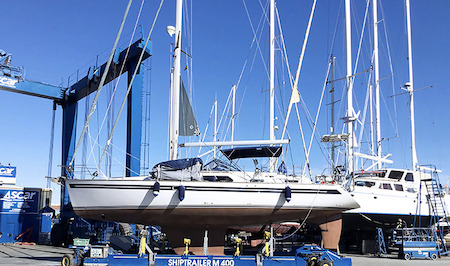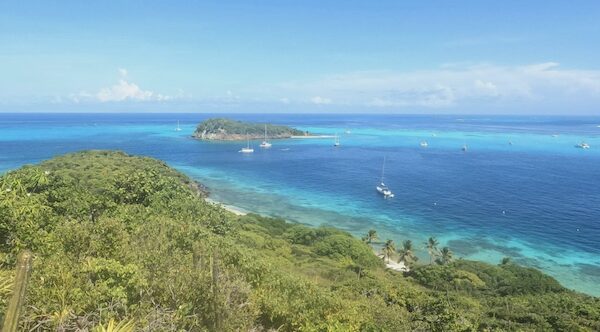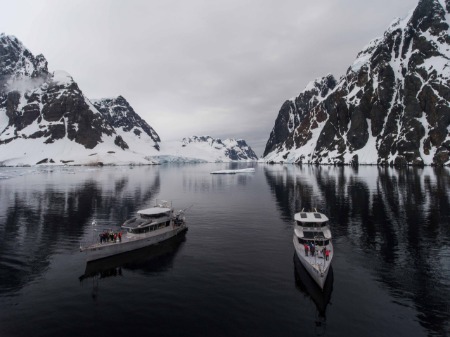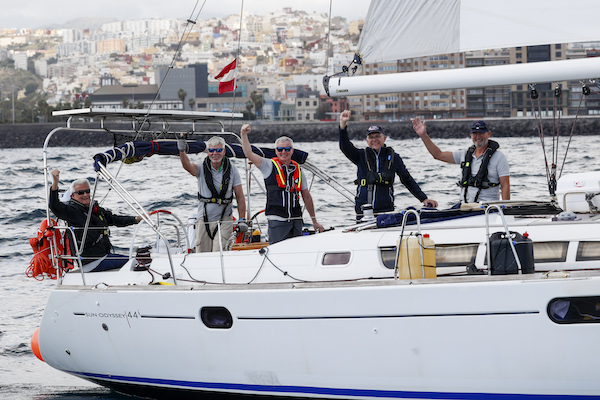The Cruising Life: Don’t Forget to Insure Your Boat for Extended Passages
When preparing for an extended voyage there are a multitude of things to consider and prepare for, including the boat’s equipment and passage planning. With the pressure to cast off and boat jobs to finish, one area that can often get overlooked is the vessel’s insurance and ensuring adequate cover has been agreed and purchased prior to departure. Topsail Insurance explain important considerations and how best to extend your insurance cover for cruising passages.
Published 1 year ago
Insuring your boat for extended cruising passages
You’ve checked your hull, overhauled the rigging, had long discussions with the crew and meticulously put your passage plan together. With all these practical considerations that are likely to be at the forefront of your mind, insurance can get overlooked.


Just recently we received an email from an experienced boat owner that had departed for an ocean passage and was now in a panic. After several days of cruising and now significantly south of their permitted cruising parameters, the owner realised their omission.
Unfortunately, getting cover reinstated can be a tricky affair as you may be outside of an area your current Insurer is willing to cover, or they may be concerned about potential claims during the period you were uninsured. We’ve looked after the owner, but I’m sure they’ve had some unnecessary sleepless nights.
It Pays to Be Prepared
If you’re going to need to insure your yacht for extended cruising or oceanic passages, it pays to be prepared. You hopefully use a marine insurance specialist. It certainly helps to have a broker or insurance agency that has access to several Insurers or markets. You’ll find with any Insurer that they have likes or dislikes that are unique to them and you may need your broker or agency to review several options for you.
At this time of year the Caribbean is a hugely popular destination, but if you’re sailing from Europe, the Bay of Biscay can be a “no-go” for Insurers, due to its violent reputation.


Unfortunately, you also need to keep an eye on geo-political tensions as well, with the Eastern Mediterranean, Red Sea and Gulf of Aden all being low down on Insurers risk appetite at the moment. In general Insurers like to know there are adequate facilities along your proposed route and so destinations such as the Arctic Circle, or Antarctic, will require also even more notice to your Insurers.
Prepare and Present your Plan
It is always helpful to present your plan to your broker or agent several weeks before you are likely to need extended cover.
Geographical Limits
They’ll need to know your required geographical limits in order to make sure your route and destinations fall within the covered zones. Insurers may look to exclude some areas, especially regions with piracy risk or where there is a high risk of named storms during hurricane or typhoon seasons.
Survey/Equipment Report
Equally, Insurers are going to be more interested in the age and reliability of your equipment than normal. On older vessels, it is not unusual for Insurers to ask for an independent report on your vessel from a qualified marine surveyor and even on newer vessel they may require rig reports or confirmation of the last professional engine service.


New Equipment
Typically as well, as part of your preparations you’ll have invested in some new or additional items of equipment that will increase the overall insured value of your vessel. Don’t forget to add these to your coverage, otherwise you could be potentially out of pocket should an unfortunate incident occur.
Crew Experience
The experience of your crew will be a consideration for any Insurer. Have the Skipper and crew undertaken this or similar passages before? If not, what sort of nautical mileage have they done and what boating qualifications do they hold? That’s not to say that Insurers won’t cover crew on their first long distance passage – we’ve all got to start somewhere – but you may find that they’ll want even more detail on preparing your vessel. Be prepared to provide a Sailing CV for you and your crew if needed.
Single-Handing
Long distance single-handed sailing can be a real challenge to get cover for and a lot of Insurers will insist on no single leg being in excess of 24 hours.


Crew Medical Insurance
The crew will also as a minimum need repatriation and medical expenses cover for offshore cruising. Don’t get caught out, as this doesn’t tend to be offered by standard travel insurance policies which often exclude sailing activities entirely or cease cover once you get more than 10/12 miles offshore.
Don’t rely on free travel insurance that comes with your bank account for example. Check the coverage to ensure you have what you need when sailing offshore. Should the unexpected happen you want to know that your crew are going to get the best possible treatment for injury or illness no matter where you are in the world.
Check the Excess and Deductibles
Finally, before you choose your insurance provider, it’s worth checking details other than the premium you’ll be charged. What are the excess or deductibles applicable? What are the geographical exclusions particularly around hurricane or other named windstorm regions?
Does your policy require a minimum crew level or have other stipulations that you need to comply with such as bilge pump capacity? Of course price is a factor, but of course the cheapest is not always the best, so be sure to have the right cover for you and your vessel.
We hope this helps just a little in your preparation and as a general rule, engage with your Insurance provider as early as possible.
…………………………………………………

About Topsail Insurance
Topsail Insurance was launched in 1996 and since then has provided specialist marine insurance products to the sailing community. Topsail provide cover for long distance passages and blue water cruising. Our Yachtsman’s and Tall Ships Travel Insurance products are quick and easy to access online and are backed by Lloyd’s of London underwriters.
Email: enquiries@topsailinsurance.com
Web: www.topsailinsurance.com
…………………………………………………
See Noonsite’s Insurance Page for more helpful information on insuring your vessel and crew.
…………………………………………………
The opinions expressed in this article are the business owner’s own and do not reflect the view of Noonsite.com or World Cruising Club.
Related to the following Cruising Resources: Atlantic Crossing, Circumnavigation, Cruising Information, Global Yachting Services, Indian Ocean, Insurance, Medical, Medivac Services, Pacific Crossing, Planning and Preparation, Routing, Safety and Medical



